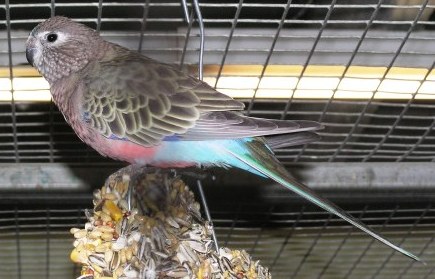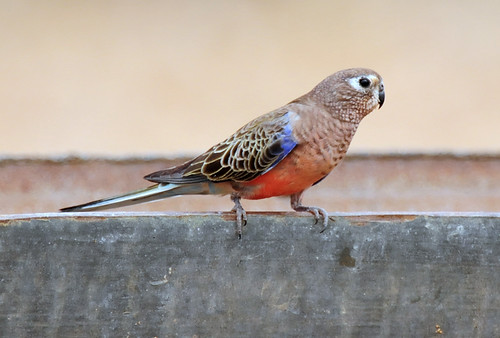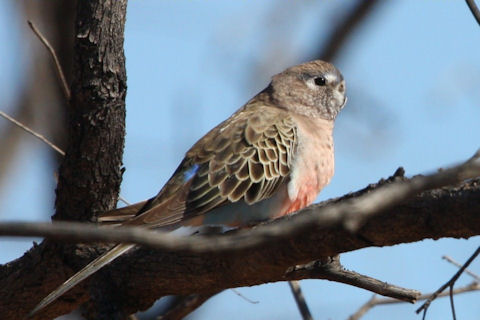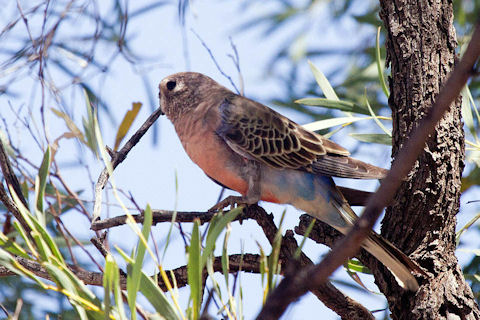Bourke's Parrot Biography
When compared with other parrots, the plumage of the Bourke’s Parrot is rather sombre. Their mostly grey-brown appearance is relieved only by pale blue feathering on its rump, the sides of its tail and on its wings, while its breast and belly are the palest shade of pink. Inhabiting seemingly inhospitable semi-arid acacia woodlands of inlandAustralia








When compared with other parrots, the plumage of the Bourke’s Parrot is rather sombre. Their mostly grey-brown appearance is relieved only by pale blue feathering on its rump, the sides of its tail and on its wings, while its breast and belly are the palest shade of pink. Inhabiting seemingly inhospitable semi-arid acacia woodlands of inland
Bourke's Parrot is a small parrot which is mostly grey-brown above and pinkish below. It has a prominent area of white around the eyes, giving a spectacled appearance. The male has a blue forehead band, with blue also on the bend of the wing, and a paler shade of blue on the flanks, side of rump and under the tail. The female Bourke's Parrot is similar, but duller. The Bourke's Parrot is also known as the Blue-vented, Night, Pink-bellied or Sundown Parrot; Blue-vented, Bourke or Pink-bellied Parakeet; and Bourke or Bourke's Grass-Parakeet.
Bourke's Parrot is not like any other parrot, but in some circumstances may be confused with the Diamond Dove, Geopelia cuneata. Bourke's Parrot is widespread across arid and semi-arid areas of the inland, from north-western New South Wales and south-western Queensland to the mid-coast of Western Australia , and from the Devil's Marbles in Northern Territory
Bourke's Parrot is found in mulga and other acacia scrubs, and in native cypress and other open eucalypt woodla Bourke's Parrots feed mainly on the ground, and only occasionally in trees. Pairs, or small groups of four to six, feed on seeds of grasses and herbs. They need to be near a source of water, which they visit usually at dawn and dusk.
Bourke's Parrots form monogamous pairs. They nest in a hollow, usually vertical, of a dead tree or stump. The eggs are laid on decayed wood in the bottom of the hollow. The female incubates the eggs, leaving the nest once a day to be fed regurgitated seeds brought by the male, and both parents brood the young.
Bourke's Parrot

Bourke's Parrot

Bourke's Parrot

Bourke's Parrot

Bourke's Parrot

Bourke's Parrot

Bourke's Parrot

Bourke's Parrot

Bourke's Parrot
Bourkes Parakeet-Perky!
Jill's Friendly Bourke Parrots
No comments:
Post a Comment